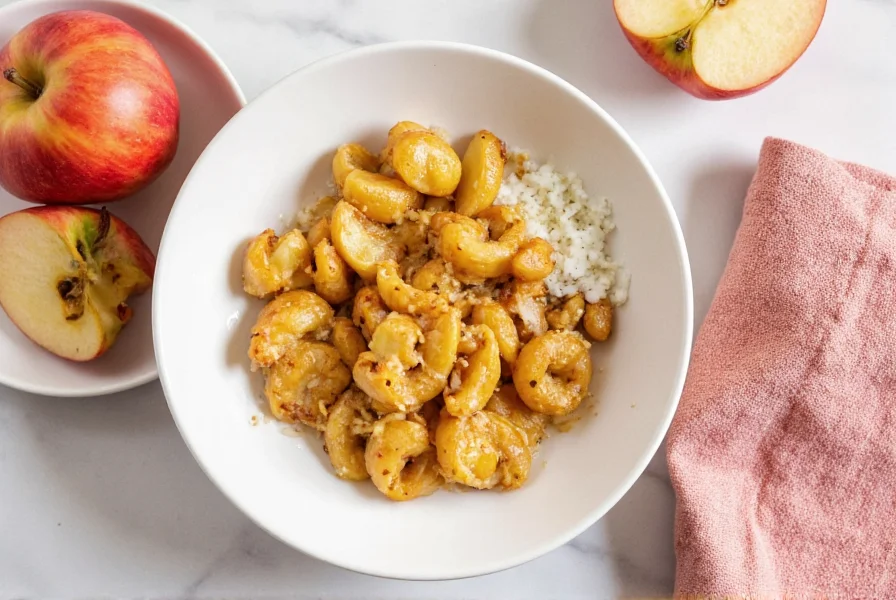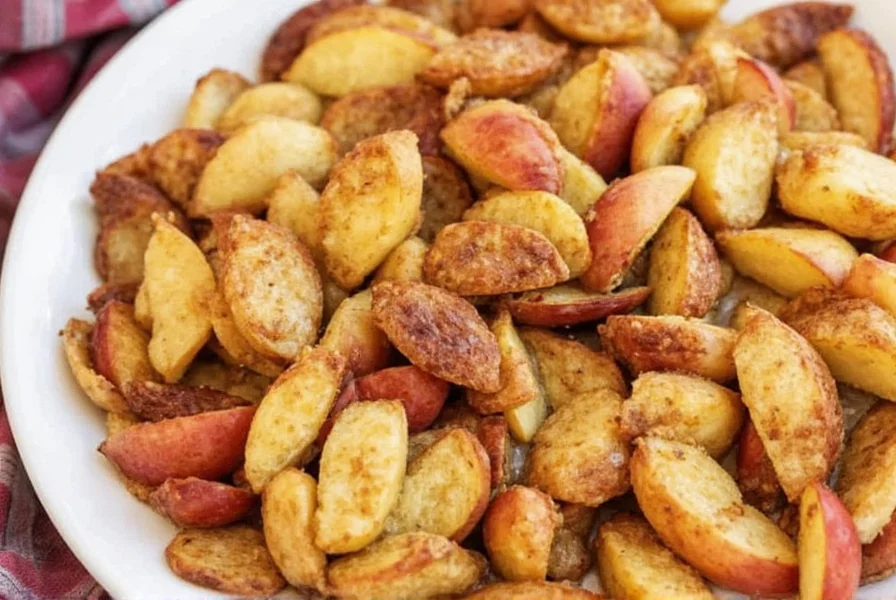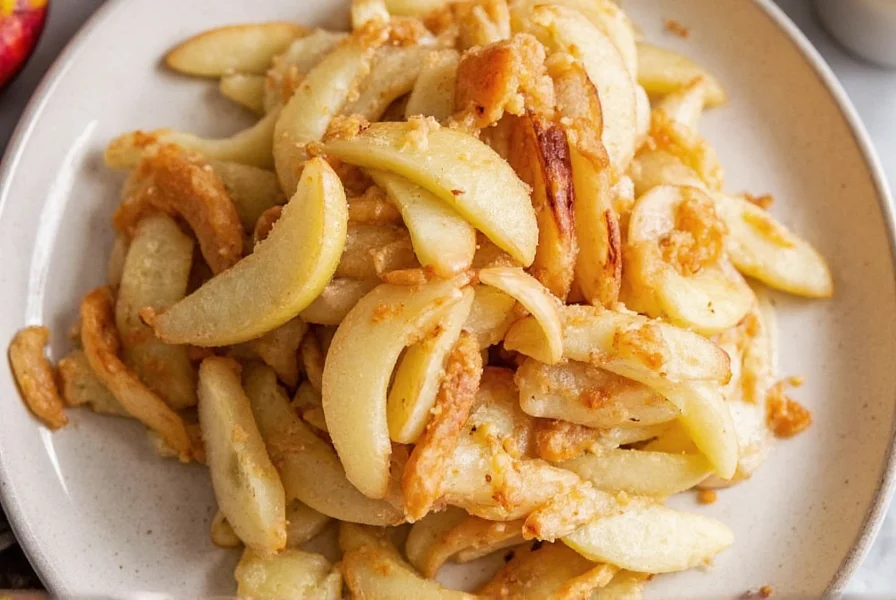Macintosh apples, affectionately known as “Macs,” have been a kitchen staple since their discovery in 1811 on John McIntosh’s Canadian farm. These crisp, juicy apples feature a perfect balance of sweet and tart flavors with a tender texture that breaks down beautifully when cooked. Understanding how to pair spices with Macintosh apples transforms ordinary dishes into extraordinary culinary creations.
Why Macintosh Apples Respond Exceptionally to Spices
Unlike modern hybrid varieties bred for firmness, Macintosh apples contain higher moisture content and natural pectin levels. When heated, they soften rapidly while releasing aromatic compounds that interact beautifully with warm spices. Their distinctive flavor profile—a blend of citrusy brightness and honeyed sweetness—creates an ideal canvas for spice enhancement without becoming cloying.
Top Spice Pairings for Macintosh Apples
Professional chefs and home bakers consistently reach for these spices when working with Macintosh apples. Each complements the apple’s natural chemistry while contributing unique flavor dimensions.
| Spice | Flavor Contribution | Recommended Ratio (per 4 apples) |
|---|---|---|
| Cinnamon | Warmth, subtle sweetness | 1-1.5 tsp ground or 2-3 sticks |
| Nutmeg | Earthy depth, complexity | 1/8 tsp freshly grated |
| Allspice | Peppery warmth with clove notes | 1/4 tsp ground |
| Cardamom | Floral citrus undertones | 1/4 tsp ground or 4-5 pods |
Cinnamon: The Essential Companion
Cinnamon remains the most versatile spice for Macintosh apples due to its ability to enhance natural sweetness while adding warmth. For optimal results, use Ceylon cinnamon rather than the more common Cassia variety—it offers a more delicate, complex flavor that won’t overwhelm the apple’s subtleties. When making Macintosh apple pie, combine 1 teaspoon of cinnamon with a pinch of salt to balance the sweetness perfectly.
Nutmeg: The Secret Ingredient
Freshly grated nutmeg works magic with Macintosh apples, particularly in savory applications. Its earthy warmth complements the apple’s tartness beautifully. Add just a pinch to spiced Macintosh apple sauce for an unexpected depth that elevates the simple condiment. Remember: a little goes a long way—overuse creates bitterness that clashes with the apple’s delicate flavor.
Allspice: The Flavor Amplifier
Despite its name, allspice isn’t a blend but a single berry that naturally combines notes of cinnamon, nutmeg, and clove. This makes it particularly effective for Macintosh apple crisp recipes, where it harmonizes multiple spice elements. Use sparingly—1/4 teaspoon per four apples provides complexity without dominating. For holiday baking, pair allspice with orange zest to highlight the apple’s natural citrus notes.
Advanced Spice Techniques for Macintosh Apples
Professional results require more than simply adding spices. Understanding timing, preparation methods, and complementary ingredients creates truly exceptional dishes.
Layering Spices for Maximum Impact
For cooking with Macintosh apples and spices, add different spices at various stages:
- Add whole spices (cinnamon sticks, cardamom pods) to liquid first to infuse base flavors
- Incorporate ground spices midway through cooking to preserve volatile compounds
- Finish with a sprinkle of freshly grated nutmeg just before serving
Temperature Matters
Macintosh apples break down quickly when heated, so spice distribution becomes critical. For Macintosh apple pie spice combinations, toss sliced apples with spices and let them macerate for 15-20 minutes before baking. This allows the spices to penetrate the fruit rather than just coating the surface, creating more balanced flavor throughout.

Recipe Applications: From Simple to Sophisticated
Understanding these principles transforms basic preparations into memorable dishes. Here are three approaches demonstrating different applications of spiced Macintosh apple recipes.
Everyday Spiced Apple Slices
Perfect for weeknight desserts or breakfast toppings:
- Slice 2 Macintosh apples, keeping peels on for texture
- Toss with 1/2 tsp cinnamon, 1/8 tsp nutmeg, and 1 tsp lemon juice
- Cook in 1 tbsp butter over medium heat for 8-10 minutes
- Finish with a squeeze of fresh orange juice
Classic Macintosh Apple Pie
The definitive application of Macintosh apple pie spice combination:
- Use 6 cups sliced Macintosh apples (peeled)
- Combine with 3/4 cup sugar, 1.5 tsp cinnamon, 1/4 tsp allspice, 1/8 tsp nutmeg
- Add 1 tbsp lemon juice and 2 tbsp flour
- Let sit 30 minutes before filling pie crust
Savory Apple Chutney
Demonstrating Macintosh apple flavor pairings beyond sweets:
- Combine 2 diced Macintosh apples with 1/2 cup vinegar, 1/4 cup brown sugar
- Add 1/2 tsp mustard seeds, 1/4 tsp ginger, pinch of cayenne
- Cook until thickened (15-20 minutes)
- Perfect with pork or cheese plates
Common Mistakes to Avoid
Even experienced cooks make these errors when working with Macintosh apples and spices:
- Over-spicing: Macintosh apples have delicate flavor—start with less spice than you think you need
- Adding spices too late: Ground spices need cooking time to mellow and integrate
- Ignoring acid balance: Always include lemon juice to brighten spice flavors
- Mixing apple varieties incorrectly: If combining with firmer apples, add Macs later in cooking

Seasonal Considerations for Spice Pairing
The ideal spice combinations for Macintosh apples vary by season. During peak harvest (September-October), the apples’ natural sweetness allows for more complex spice blends. In late winter when stored apples lose some vibrancy, simpler combinations with pronounced spices work better. For how to spice Macintosh apples for baking in different seasons:
- Fall: Use lighter spice ratios to showcase fresh apple flavor
- Winter: Increase spice quantities slightly to compensate for flavor degradation
- Spring/Summer: Focus on citrus-enhanced spice blends using lemon or orange zest
Conclusion: Mastering Macintosh Apple Spice Pairings
Macintosh apples’ unique flavor profile makes them exceptionally responsive to thoughtful spice combinations. By understanding the science behind these pairings and applying professional techniques, home cooks can create dishes that showcase this heritage apple variety at its best. Remember that the goal isn’t to mask the apple’s flavor but to enhance its natural characteristics through carefully calibrated spice applications.
Frequently Asked Questions
Can I use Macintosh apples for savory spice applications?
Yes, Macintosh apples work beautifully in savory applications when paired with appropriate spices. Their natural tartness balances rich meats like pork and duck. For savory dishes, use warm spices like allspice and cardamom in smaller quantities (about half what you'd use for sweet applications), and complement with black pepper, mustard seeds, and fresh herbs like thyme or rosemary.
What’s the best spice ratio for Macintosh apple pie?
The ideal spice ratio for Macintosh apple pie is 1.5 teaspoons cinnamon, 1/4 teaspoon allspice, and 1/8 teaspoon freshly grated nutmeg per 6 cups of sliced apples. This combination enhances the apple’s natural flavor without overwhelming it. Always include 1 tablespoon of lemon juice to balance the sweetness and brighten the spice notes.
Why do my spiced Macintosh apples turn mushy?
Macintosh apples naturally break down quickly when cooked due to their high moisture content and tender cell structure. To prevent excessive mushiness when using spices, toss the sliced apples with spices and let them macerate for 15-20 minutes before cooking, then cook over medium heat (not high) and avoid over-stirring. For firmer results in pies, combine Macintosh with 25% firmer apples like Granny Smith.
Which spices should I avoid with Macintosh apples?
Strong, singular spices like cloves or star anise can easily overpower Macintosh apples' delicate flavor. If using these potent spices, limit to 1-2 whole pieces per dish (removed before serving) rather than ground form. Also avoid combining more than three warm spices simultaneously, as this creates flavor confusion rather than harmony with the apple's natural profile.
How do I adjust spice quantities for different cooking methods?
Spice quantities should vary by cooking method: for stovetop preparations, use 25% less spice than baking recipes since flavors concentrate more quickly; for slow cooking, reduce spices by 30-40% as prolonged heat intensifies their impact; when making sauces or purees, increase citrus elements rather than spices to maintain balance as texture changes affect flavor perception.











 浙公网安备
33010002000092号
浙公网安备
33010002000092号 浙B2-20120091-4
浙B2-20120091-4